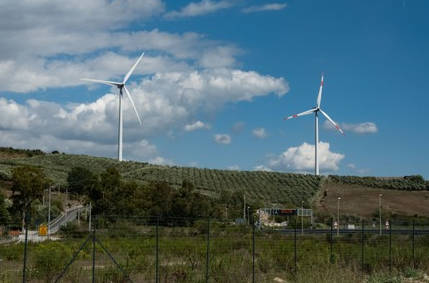
Ultima Markets App
Trade Anytime, Anywhere
Important Information
This website is managed by Ultima Markets’ international entities, and it’s important to emphasise that they are not subject to regulation by the FCA in the UK. Therefore, you must understand that you will not have the FCA’s protection when investing through this website – for example:
- You will not be guaranteed Negative Balance Protection
- You will not be protected by FCA’s leverage restrictions
- You will not have the right to settle disputes via the Financial Ombudsman Service (FOS)
- You will not be protected by Financial Services Compensation Scheme (FSCS)
- Any monies deposited will not be afforded the protection required under the FCA Client Assets Sourcebook. The level of protection for your funds will be determined by the regulations of the relevant local regulator.
Note: Ultima Markets is currently developing a dedicated website for UK clients and expects to onboard UK clients under FCA regulations in 2026.
If you would like to proceed and visit this website, you acknowledge and confirm the following:
- 1.The website is owned by Ultima Markets’ international entities and not by Ultima Markets UK Ltd, which is regulated by the FCA.
- 2.Ultima Markets Limited, or any of the Ultima Markets international entities, are neither based in the UK nor licensed by the FCA.
- 3.You are accessing the website at your own initiative and have not been solicited by Ultima Markets Limited in any way.
- 4.Investing through this website does not grant you the protections provided by the FCA.
- 5.Should you choose to invest through this website or with any of the international Ultima Markets entities, you will be subject to the rules and regulations of the relevant international regulatory authorities, not the FCA.
Ultima Markets wants to make it clear that we are duly licensed and authorised to offer the services and financial derivative products listed on our website. Individuals accessing this website and registering a trading account do so entirely of their own volition and without prior solicitation.
By confirming your decision to proceed with entering the website, you hereby affirm that this decision was solely initiated by you, and no solicitation has been made by any Ultima Markets entity.
I confirm my intention to proceed and enter this website Please direct me to the website operated by Ultima Markets , regulated by the FCA in the United KingdomGlobal Upstream Exchange Technical Disruption – Impact on Selected Products
Dear Valued Client,
Due to abnormal liquidity conditions in gold caused by this disruption, we have temporarily suspended trading for all gold instruments with immediate effect.
We are writing to keep you fully informed that a technical disruption currently affecting upstream global exchange, which has resulted in interruptions to pricing and trading for several international derivatives markets.
Please be advised that this is an industry-wide incident originating from an external provider and is unrelated to our platform or price movements.During this time, clients may experience price delays, order rejections, or temporary constraints on order execution.
We understand that seamless execution is vital to your trading. We have activated our emergency monitoring protocols and are tracking the recovery progress in real-time. We will send a follow-up notification immediately once services are fully operational.
We sincerely apologize for the inconvenience caused by this external event, and our support team remains on standby to assist you should you require any assistance.
Thank you for your understanding.
Close Pop-upBest Clean Energy Stocks To Watch In 2025
Clean energy stocks are back in focus as the world builds more solar, wind, storage and smarter grids. The space is broad. Some companies look and feel like steady utilities with long term power contracts. Others move faster because they are tied to manufacturing cycles and new technology.
In this guide, you’ll see why clean energy still matters, which stocks to watch, the risks to keep in mind, and how to build a balanced portfolio.

Why Clean Energy Still Matters
Policy tailwinds are strong. The Inflation Reduction Act (IRA) gave a huge boost to the U.S. Department of Energy’s Loan Programs Office by adding about $100 billion in loan authority. It also created the Title 17 Energy Infrastructure Reinvestment program to finance grid, storage and clean power projects. On the tax side, new rules allow companies to either receive direct payments for clean-energy credits or transfer them for cash. Together, these changes make financing easier and expand investor opportunities.
Global scale is accelerating. The International Energy Agency expects more than 5,500 gigawatts of new renewable capacity to be added between 2024 and 2030. Solar is expected to carry most of this load. That means the build-out is not a short-term push, but a multi-year cycle that supports growth across the industry.
Access is broader than ever. For investors who don’t want to stock-pick, the iShares Global Clean Energy ETF (ICLN) offers one-ticket exposure to a diversified set of clean-energy companies worldwide.
How Clean Energy Stocks Make Money

Clean energy companies earn revenue in different ways depending on their role. Generators such as wind and solar farms sell electricity through long-term power purchase agreements, giving them predictable cash flow and supporting dividend growth.
Manufacturers of modules, inverters and turbines rely on scale and efficiency upgrades to strengthen margins. Grid and service providers benefit from regulated returns, interconnection fees and maintenance contracts as more projects connect.
Finally, storage firms make money from capacity payments and balancing the grid at peak times, turning batteries into a dependable revenue stream.
Top Clean Energy Stocks To Watch
A balanced mix across income, growth and reliability gives you the best exposure. Here are some of the most important names in 2025.
NextEra Energy (NEE)
Utility plus renewables leader with its Real Zero roadmap targeting a carbon-free fleet by 2045. Its scale and contracted assets underpin a long record of dividend growth.
GE Vernova (GEV)
Spun off in April 2024 and now listed on the NYSE. Combines grid, wind and efficient gas operations, making it central to the reliability needed as renewable penetration rises.
Sungrow Power (300274.SZ)
Global inverter and storage leader. Every solar installation needs inverters, and Sungrow benefits directly from each new megawatt added.
First Solar (FSLR)
Carries a contracted backlog of about 64 GW through 2030. U.S. manufacturing scale and a strong balance sheet give it rare multi-year visibility for a solar manufacturer.
Adani Green Energy (ADANIGREEN)
India’s largest renewable developer. Operational capacity reached 15.8 GW in Q1 FY26, with energy sales up 42% year on year. Strong national demand makes it a key growth play.
LONGi Green Energy (601012.SS)
One of the world’s biggest module and wafer producers. It delivered massive scale in 2024 but faces margin pressure in 2025, reflecting the competitive solar landscape.
Brookfield Renewable (BEP/BEPC)
Diversified hydro, wind, solar and storage operator. Management has reaffirmed targets of more than 10% FFO growth per unit and 5–9% annual distribution growth. A solid income anchor.
Vestas Wind Systems (VWS.CO)
Global wind OEM leader. Reported €5.2bn in Q3 2024 revenue and holds a €63.4bn combined backlog, showing strong demand for turbines and services.
China Longyuan Power (0916.HK)
One of China’s largest renewable operators. Ended 2024 with 41.14 GW of capacity, including more than 30 GW in wind. Offers direct exposure to the world’s biggest renewables market.
EDP Renováveis (EDPR.LS)
Global developer within the EDP group. After a 2024 reset, guidance points to improved delivery into 2025–2026 across Europe and the Americas with a focus on disciplined capital rotation.
Risks To Watch Up Front
Policy And Permitting: Tax credit changes, interconnection queues and local permits can reprice projects fast. Track rulemaking and queue reforms, not just earnings.
Rates And Capital Intensity: Higher rates lift hurdle rates for capex-heavy assets and can pressure CAFD and payout ratios. Watch refinancing calendars and leverage.
Supply Chains And Pricing: Module and battery pricing cycles, inverter supply and critical minerals affect margins. Pass-through clauses matter.
Correlation: Clean-energy equities often move with broader equities. Diversify across structures and sub-sectors rather than expecting automatic hedging.
How To Build A Clean Energy Portfolio
After looking at the risks and reviewing the leading clean energy stocks, the next step is understanding how to bring them together in a balanced portfolio.
- Core Income And Visibility
Start with PPA-heavy platforms for dividend growth and inflation links such as BEP BEPC and CWEN and consider NEE for a utility-plus-renewables core. - Satellite Upside
Add FSLR for manufacturing leverage to utility-scale solar demand and optionally a picks-and-shovels name like Sungrow. - Reliability Overlay
Use CEG or GEV to capture grid, flexible generation and 24/7 supply that enable high renewable penetration and AI-driven loads. - ETF Route
Prefer a simple spread Use ICLN for broad, rules-based global exposure and rebalance annually.
Conclusion

Clean energy stocks offer both growth and stability as the world transitions to renewables. From steady dividend payers to fast-moving technology leaders, the sector provides multiple ways to invest. With policy support, global demand, and new technologies driving momentum, a balanced approach helps capture upside while managing risks.
Disclaimer: This content is provided for informational purposes only and does not constitute, and should not be construed as, financial, investment, or other professional advice. No statement or opinion contained here in should be considered a recommendation by Ultima Markets or the author regarding any specific investment product, strategy, or transaction. Readers are advised not to rely solely on this material when making investment decisions and should seek independent advice where appropriate.












